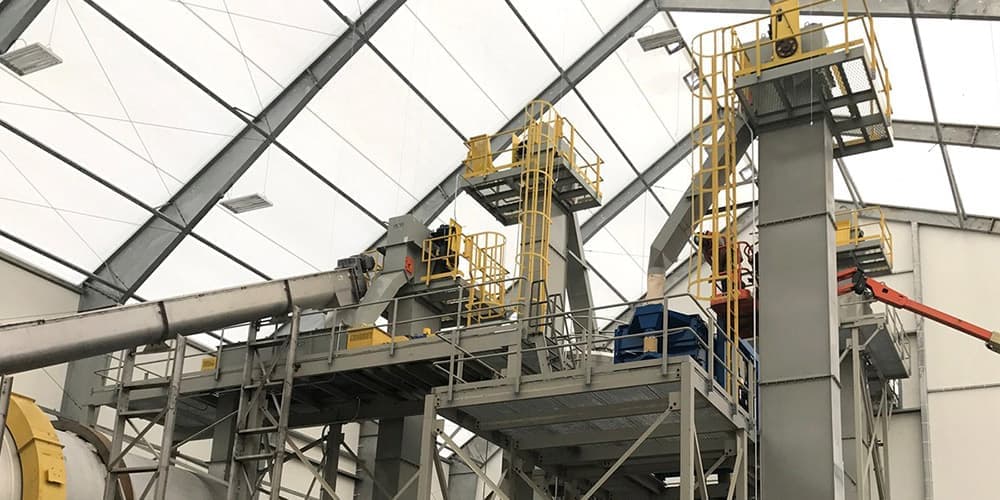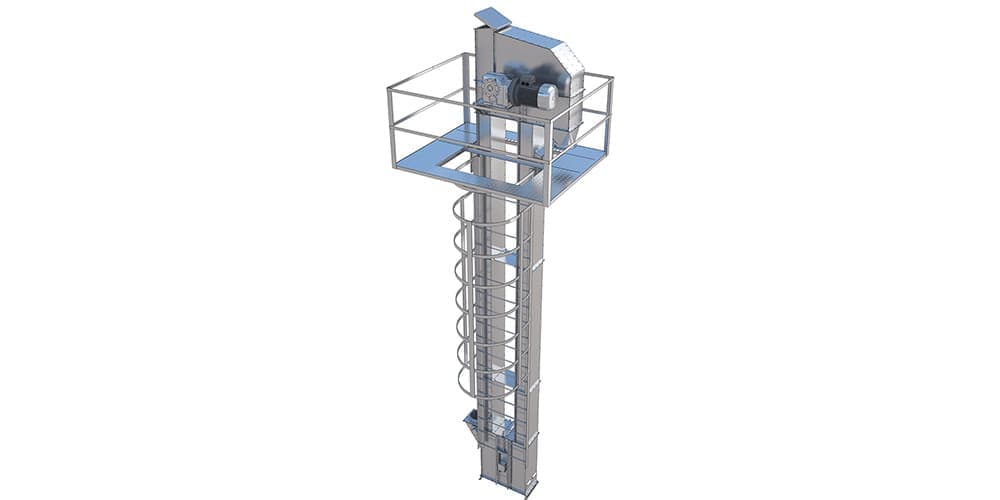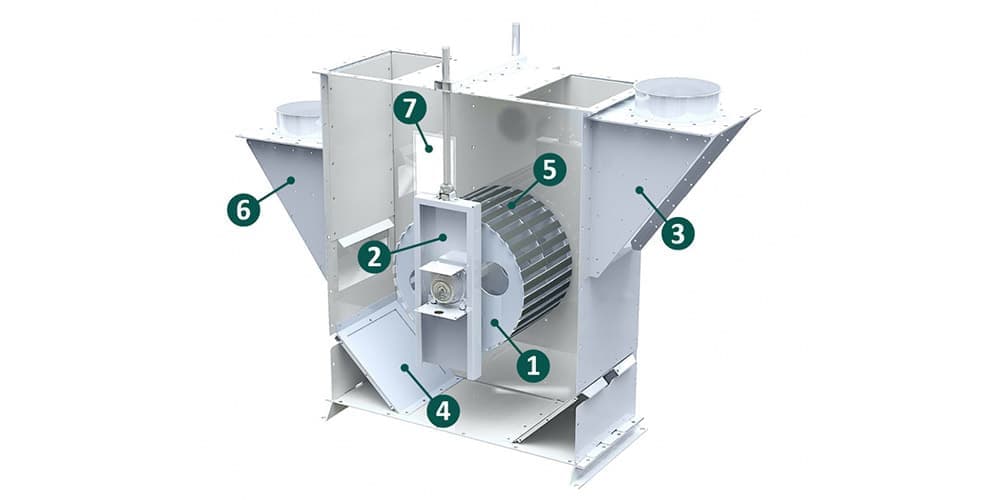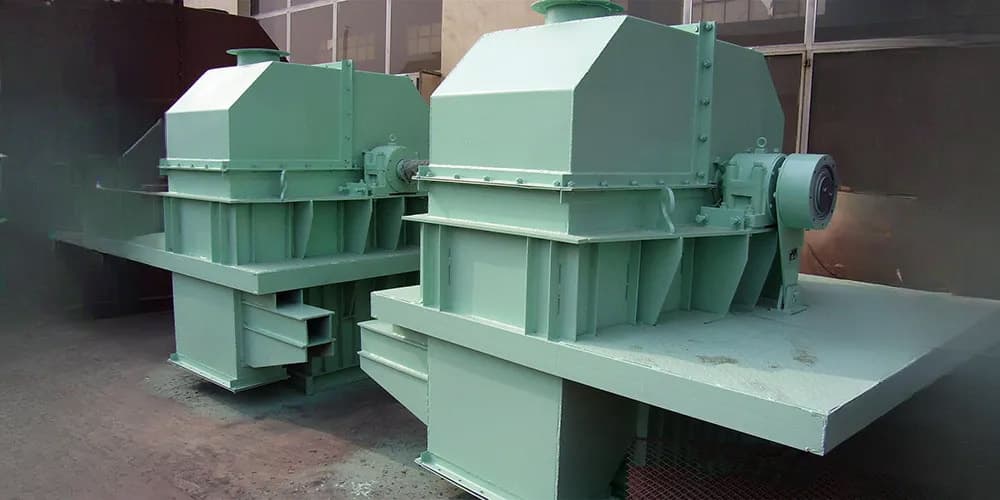Bucket Elevator Parts to Keep On Hand
Bucket elevators are key pieces of equipment in many industrial processing systems and their proper operation is critical to the entire production line. To ensure that the equipment can be quickly brought back into operation and downtime minimized, TONGLI recommends keeping a number of critical spare parts on hand. This article describes the types of spares, their importance and how to effectively manage your spare parts inventory so that they can be replaced quickly when needed to keep your production line running smoothly.

The Importance of Keeping Spare Parts for Bucket Elevators
As with any industrial process equipment, a spare parts inventory is an important part of an effective preventive maintenance program. As a bucket elevator is a critical piece of equipment in a processing system, failure of any one of its components can cause the entire operation to be suspended until the problem is resolved. Therefore, having the right spare parts on hand can often mean the difference between hours and weeks of downtime. Especially with the volatility of the supply chain in recent years, certain spare parts may be unavailable or require weeks of lead time.
Prolonged downtime can be financially disastrous: lost production, unfulfilled contracts, increased maintenance and labor costs, and more. Expediting costs for urgent spare part purchases can also add further costs.

Critical wear parts
The following critical parts are considered to be susceptible to wear and the bucket elevator either cannot operate or should not operate without them.
- Bearings
- Chains/belts
- Shafts
- Buckets
- Sprockets and pulleys
- Drive components (motors and reducers)
Bearings
Bearings are responsible for rotating the belt or chain around the pulleys or sprockets in the head and bottom sections, and bearing failure will render the unit inoperable. Therefore, bearings should be replaced preventatively before they fail.
Worn bearings increase friction, which puts additional stress on the motor and other components. Regularly check the bearings for overheating or excessive vibration, and if these conditions occur, the bearings need to be replaced.
Data required for bearing replacement:
- Shaft size
- Housing bolt spacing
Chain/Belt
If the chain or belt fails, the bucket elevator will not continue to operate. Chain and belt failures are not uncommon and repair usually requires several days of downtime. Failure of the chain or belt may also result in damage to other components. Therefore, preventive replacement of any worn or damaged components is critical.
Data required to replace a chain or belt:
- Horsepower
- Maximum hoist load
- Material handled
- Chain size (if applicable)
- Belt size (e.g. width, thickness, cover used)
Sprockets and pulleys
Although failure of sprockets and pulleys is unlikely, these components can wear out.
Data required to replace a sprocket or pulley:
- Number of teeth of the sprocket
- Bore diameter
- Type of chain used
- Pulley diameter
- Belt width
- Pulley style
- Shaft diameter
- Bushing
Drive assembly
If the motor or reducer fails, the bucket elevator will not operate. As an important and expensive component of the equipment, it should be prioritized for regular maintenance. If the design is underpowered, the design should be re-evaluated before replacement.
Data required for replacement of the drive assembly:
- Serial number
- Model information on nameplate
Shaft
The head shaft serves as the drive shaft and the bottom shaft is usually mounted on a gravity tensioning device that tension the chain/belt by rotating the head shaft. If the shaft material is not properly selected or is defectively manufactured, it may not be able to handle the load of the bucket chain/belt assembly. Frequent overloading can also stress the shaft and lead to failure.
Data required for shaft replacement:
Shaft drawing
Bucket
Although elevator buckets are not usually considered critical wear parts, they do deserve attention. Damaged or worn buckets can cause problems without being addressed. Elevators missing buckets can reduce efficiency and in severe cases can lead to significant bottlenecks in the process.

Spare parts inventory management recommendations
To effectively manage spare parts inventory, TONGLI recommends.
- Maintain detailed records, including information on stocked parts, serial numbers, key specifications, preferred suppliers, etc.
- Establish a good relationship with reliable spare parts suppliers.
- Establish a standardized inventory management process, including a work order system.
- Train all personnel to recognize potential problems.
- Conduct regular inspections to identify and resolve problems in a timely manner.
- By implementing these recommendations, you can ensure that critical spare parts are readily available, minimizing downtime and increasing productivity.

How to choose a reliable spare parts supplier?
Choosing a reliable spare parts supplier is critical to ensuring the proper operation of your bucket elevator.
Here are some suggestions for selecting a reliable spare parts supplier.
1. Prioritize the original equipment manufacturer (OEM), which usually provides the most compatible and high quality spare parts and has the best knowledge of the equipment.
2. Carefully evaluate potential suppliers for reliability, timeliness and ease of cooperation. This can be done by looking at
- The supplier’s industry reputation and experience
- Spare parts quality and compatibility
- Delivery time and punctuality
- Technical support and after-sales service capabilities
- Price reasonableness
3. Establishment of good working relationship. Establishing a long-term and stable working relationship with the supplier will enable you to obtain the required spare parts faster in case of emergencies.
4. Examine the supplier’s inventory management capability. A good supplier should be able to provide common spare parts in time and manage inventory effectively.
5. Evaluate the supplier’s expertise. A reliable supplier should be able to provide professional advice to help select the right spare parts and solve technical problems.
6. Check the supplier’s quality control system. Ensure that the supplier has a rigorous quality control process and is able to provide high quality, reliable spare parts.
7. Consider the supplier’s geographical location. Choosing a supplier that is geographically close can reduce lead times and facilitate on-site support.
By carefully evaluating and selecting reliable spare parts suppliers, you can ensure that you get high-quality spare parts, reduce downtime, and improve the operational efficiency and reliability of the bucket elevator. Establishing a good relationship with the supplier will help to obtain the required spare parts in a timely manner and ensure the continuity of production.

TONGLI is not only an industry leader in bucket elevators, but also offers a comprehensive spare parts and service program to keep your bucket elevator running efficiently and reliably. We offer a wide range of high quality spare parts, including:
- Genuine parts
- General purpose parts
- Rebuilt parts
We also offer the following services:
- On-site services
- Maintenance programs
- Troubleshooting
Contact TONGLI today for more information on bucket elevators, spare parts and service.

